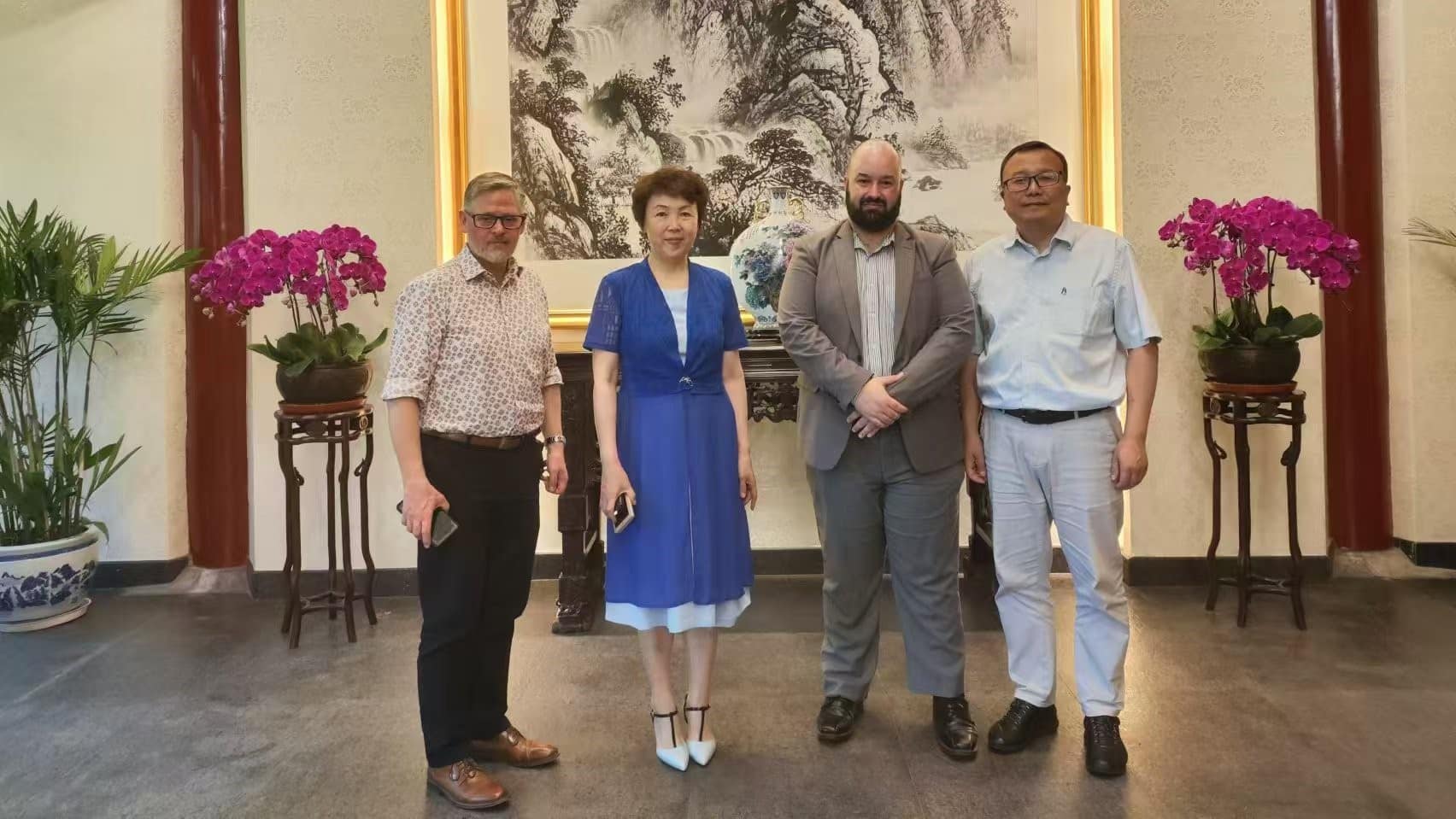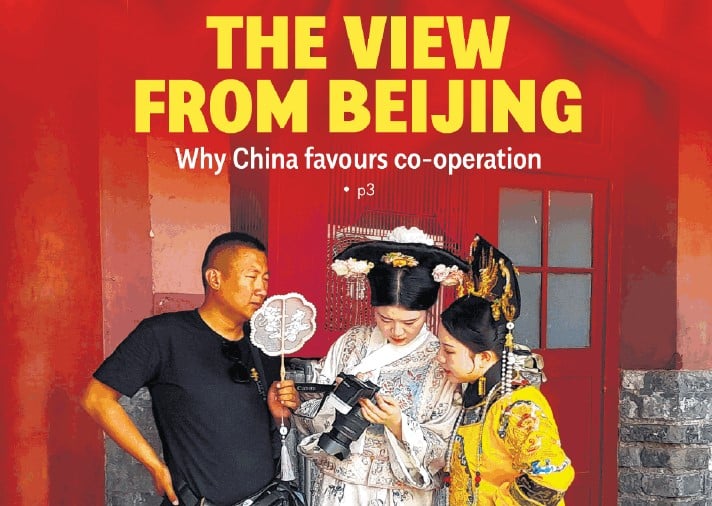BELT AND ROAD AND THE NZ-CHINA CONNECTIVITY AGENDA – A NEW ZEALAND PERSPECTIVE
ADDRESS TO BELT AND ROAD FORUM, AUCKLAND, 26 OCTOBER 2017
STEPHEN JACOBI, EXECUTIVE DIRECTOR, NZ CHINA COUNCIL
It’s good to be with you and my thanks to the Confucius Institute, Professor Jenny Dixon and Nora Yao for co-operating with the NZ China Council in putting together today’s Forum.
I bring you greetings from the Council’s Chairman, Rt Hon Sir Don McKinnon, who could not be with us today.
It’s a pleasure also to welcome our friends from Fudan University and I would like to thank Professor Shen Dingli for his informative and thought-provoking address just now.
We are meeting at a decisive time, both for New Zealand, as a new government takes office, and for China, as the leadership emerges from the 19th Party Congress.
Both governments, like others around the world, are concerned with a fundamental question – how to ensure national security and prosperity and how to fashion the international environment in such a way in which it promotes peaceful and respectful foreign relations as well as sustainable and inclusive growth.
We had hoped to hear a New Zealand Government viewpoint but our post-electoral process intervened so I am the poor substitute.
Needless to say, my comments represent the views of the NZ China Council, not in any way the incoming Government.
I do feel very confident in saying that China will continue to be important to New Zealand and what is important to China will be very carefully taken note of in New Zealand.
“Belt and Road” is clearly one of those important things.
Having heard from Professor Shen, I’d like to offer a New Zealand perspective focusing on three areas:
-
How we are being drawn to interpret Belt and Road in the light of developments in the relationship
-
What we believe New Zealand can offer Belt and Road
-
What we in the NZ China Council are doing to make this offer more concrete.
Hopefully, what I should say will provide some background for the panel we are to hear from shortly.
Interpreting Belt and Road
Some four years after the launch of Belt and Road there is still much that has yet to be fully explored and understood but what is clear is that this is an extraordinarily ambitious vision which is continuing to evolve.
When in China earlier in the year I discovered a new academic discipline – “Roadology” – the art and science of Belt and Road.
In the run-up to last May’s Belt and Road Forum in Beijing last May and since then,
the concept has broadened out considerably to focus on a vision for enhanced connectivity between China and the rest of world.
When Chile or Argentina can proudly claim a role in Belt and Road something must have changed!
Belt and Road has also been described as a new way of managing globalisation – a more inclusive, development-led model, as opposed to model based on technology and trade liberalisation.
China clearly sees Belt and Road as a way of showing leadership on globalisation at a time when others especially the US might be seen to be retreating inwards.
BRI has its fair share of sceptics and critics: some see BRI as a mere slogan; others see it as a means for China to develop soft power and even as a means of projecting industrial strategy.
But BRI is not going to go away – it is supported at the highest levels of the Chinese Government, is coordinated by the National Reform Development Commission and judging by the discussion at the Party Congress is now seen as a central pillar of China’s economic strategy.
But what does Belt and Road represent for a distant nation like New Zealand?
For New Zealand, BRI represents a great opportunity – an opportunity to demonstrate how New Zealand expertise and interests can add value and contribute to China’s vision.
It’s no secret that New Zealand’s relationship with China has developed rapidly in recent years to the stage of a Comprehensive Strategic Partnership.
This has been the result largely of the famous “firsts” in the relationship, including being the first developed economy to sign an FTA and now also the first developed economy to upgrade its FTA.
By any measure – trade, investment, tourism, education, scientific co-operation, people to people exchanges – the relationship continues to expand.
It is also true that New Zealand now faces greater competition for attention in China.
It’s not surprising – other countries with superior resources and deeper connections have lifted their game, even cautious Australia has negotiated a very good FTA.
It is the assessment of the NZ China Council that New Zealand cannot afford to stand aside from developing a contribution to Belt and Road but we need to do so carefully and in a way which matches our interests, our values and, especially, our comparative advantage.
Developing NZ’s contribution
The Memorandum of Arrangement signed between the two governments at the time of Premier Li Keqiang’s visit provides a mechanism for NZ firstly to define how it can contribute to BRI and secondly to present this under a framework for bilateral co-operation.
The MoA is largely aspirational but sets a timetable of 18 months for the development of this co-operation – we understand the official wheels are now in motion to put some greater flesh on the bones of how we might co-operate in the future.
It’s interesting to see that the emphasis in the MoA is on connectivity rather than infrastructure.
While infrastructure development is a major focus for China in the developing economies, especially in Eurasia, it is in our assessment unlikely to be so in New Zealand.
This is not to say that there cannot be Chinese participation in New Zealand’s infrastructure development.
Chinese building companies are already involved here and will continue to be able to tender for projects as they are rolled out.
But BRI is not a source of concessionary finance and New Zealand’s infrastructure needs, while acute, are not on a strategic scale when viewed in the context of Belt and Road.
We suspect the greater benefit for NZ is likely to be in the “soft infrastructure” rather than the “hard infrastructure” – the way goods, services, capital and people move along the belt and road rather than the road itself.
New Zealand has wide policy expertise and services to offer in this area which matches a number of the policy areas China has highlighted for Belt and Road including policy co-ordination, investment and trade facilitation, and cultural and social exchange.
Areas where New Zealand can contribute to BRI include trade facilitation, supply chain connectivity, innovation and trade policy and regulatory co-operation.
A key task before us at this point is to develop deeper thinking and more specifics about how we can assist and how this can be presented to the Chinese.
Making our offer more concrete
The NZ China Council has under a development a strategic pathway to help identify the opportunities.
At the end of last year, we began with colleagues at the Asia New Zealand Foundation to develop our thinking about Belt and Road.
We have sought insight from our colleagues in China and have undertaken outreach through the New Zealand media – our comments are all available on our website.
The strategic pathway adopted in June has three stages:
-
A report to highlight opportunities according to New Zealand’s comparative advantage
-
The development of further web-based materials to highlight these opportunities for New Zealand stakeholders
-
A process of outreach to New Zealand business and other stakeholders to develop further these ideas.
We are well advanced with this programme.
With the help of the Government, the Asia NZ Foundation and a number of private sector funders and after competitive tender, we have appointed PwC to prepare the report.
I am pleased that Colum Rice, Senior Partner with PwC, is with us today and will participate in our panel discussion.
The report will be ready for release by the end of November and we envisage the web-materials to be ready by the end of the year with the outreach being undertaken in early 2018.
This fits in well with the timetable for the official Belt and Road process arising from the Memorandum of Arrangement.
While proceeding to implement this strategy, we need to continue to monitor developments in China and give further thought to any risks in pursuing this course.
What might those risks be?
One obvious one is that New Zealand might under-estimate or over-estimate the value of participation.
As we have said we have said we see Belt and Road as an opportunity to re-position our relationship with China.
That said, we do not see either Belt and Road or the relationship with China as replacing other important relationships and arrangements with the rest of the world.
Some of you will know me as an outspoken advocate of the Trans-Pacific Partnership: I think it possible to deal with multiple abbreviations TPP and BRI!
Nor does Belt and Road obviate the need to proceed with the FTA upgrade – on the contrary, the upgrade could be seen to have even broader significance if placed in the bigger context of BRI.
Contrary to the assertion of some in the media, our Chinese friends are not requiring us to surrender sovereignty in order to participate in BRI – it is up to us to make the running and to come up with ideas that add value, as I have said, on the basis of our interests, our values and our comparative advantage.
Conclusion
Many maps we see of Belt and Road somehow don’t manage to include New Zealand – getting New Zealand on the map is a key challenge!
It’s clear we have much work to do to make sure we in New Zealand are on the fully able to participate in this grand vision for connectivity.
This Forum is an important part of the process and I am delighted that we at the Council could co-operate with the Confucius Institute and Fudan University to bring this event to you.
Developing New Zealand’s relationship with China and other countries along the Belt and Road requires the sort of innovative new thinking that we collectively can bring to bear.
I for one am looking forward to seeing where this thinking might lead us in the future.












 MENU
MENU
